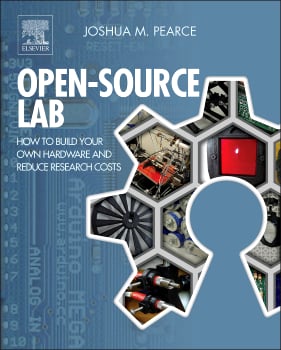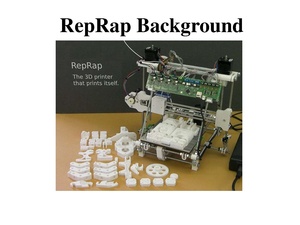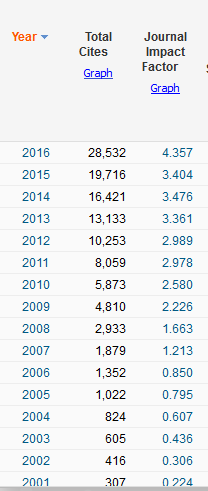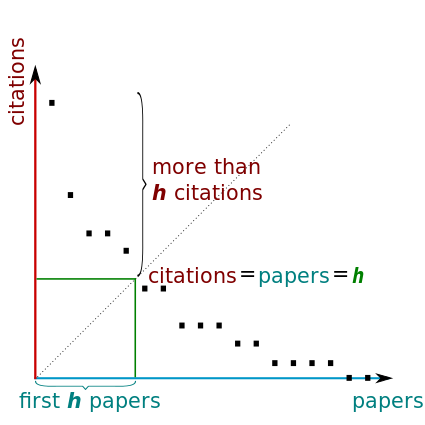MSE 5621 Open Source Scientific Hardware[edit | edit source]
(Fall 2020)
- Class 9:30 am - 10:45 am TR office hours directly after lecture, live on Jitsi - see course email for access
- Aug 27, 2020 - Dec 11, 2020
- Instructor: User:J.M.Pearce
- MTU Library 3-D printing: https://www.mtu.edu/library/services/computers-and-technology/3d-printing/
- Help with MOST Delta 3-D Printers: https://groups.google.com/a/mtu.edu/forum/?hl=en#!forum/most-delta-users-l then use email: most-delta-users-l@mtu.edu
- For open source Lulzbots 3-D printers: https://forum.lulzbot.com/
Why Take This Course?[edit | edit source]
This is a project-based course where students learn how to develop open hardware for their own experiments and assignments will develop students’ skills through progressively more sophisticated design challenges. The final and most complicated challenge will be student-selected projects to assist their own research groups and will make use of borrowed open source 3-D additive manufacturing platforms to fabricate the device.
Why 3-D Printing? A recent report from data company Wanted Analytics found that in one month 35 percent of engineering job listings from a variety of fields, including biomedical, software, and transportation industries, required applicants familiar with 3-D printing.[1] Forbes explains why 3D printing is such a big deal. “50% of manufactured goods will be printed in 2060” according to ING
Why open source? You will make more money, because OS is more valuable. Recent analysis shows that jobs with the keywords "Microsoft Windows" have an average salary of $64,000, while jobs with the keyword "Linux" have an average salary of $99,000. [2]
Why open source hardware in science? Numerous studies have now shown that custom scientific hardware creates enormous value, enables more rapid development of science, better equipment and provides jaw-dropping ROIs for science funders.[3]
Course Description[edit | edit source]
This course provides an introduction to the use of distributed digital manufacturing of open source hardware for scientific and engineering applications. Recent progress in this area has radically reduced the costs of scientific equipment, while enabling high-quality state-of-the-art customized experiments. First this course will provide an overview of open-source hardware and technological development in theory and practice. Licensing issues will be explained. Both the use of free and open source design and manufacturing software and their user communities will be highlighted and demonstrated. Next, the course will detail the design, use and maintenance of the tools themselves and open-source electronics. In particular, the use of open source digital distributed manufacturing will be discussed in detail including: hardware, firmware, slicing, milling and printer controller software for operating and maintaining the devices. Finally the material properties, applications and ramifications of open source distributed digital manufacturing technology will be discussed along with the development of and other open hardware fabrication tools. Then, the technological evolution of the open-source digital manufacturing technology will be covered with a focus on developing innovation for improved performance and customization.
This will be a project-based course where students learn how to develop open hardware for their own experiments and assignments will develop students' skills through progressively more sophisticated design challenges. The final and most complicated challenge will be student-selected to assist their own research group and will make use of an open source 3-D additive manufacturing platform to fabricate the device.
Credits: 3.0 Prerequisites. The course is meant for graduate students in science or engineering. While students in other areas with a strong interest in this topic are also welcomed they are expected to have a fundamental scientific understanding and be technically proficient.
Required Course Material[edit | edit source]

Textbook: J.M. Pearce, The Open-Source Lab (Elsevier,2014). Other reading will be handouts in class, on-line reading, and emailed pdfs. See hyperlinks below.
Materials for final project of your choice.
Free and open source software needed: OpenSCAD, FreeCAD, Blender, Lulzbot Edition Cura.
Other Useful Books[edit | edit source]
- Building Open Source Hardware: DIY Manufacturing for Hackers and Makers
- Practical Laboratory Automation: Made Easy with AutoIt
- Practical Arduino: Cool Projects for Open Source Hardware (Technology in Action)
Course Organization[edit | edit source]
This course will be run as an intense seminar meeting as a group. Students will be expected to read the course material before class and actively participate in discussions. The majority of class time will be spent on projects in a flipped class format. Each student will be responsible for designing and in the final project building open source scientific hardware. Students will be responsible for giving short presentations on their projects on each sub-topic in front of the class.
Learning Objectives[edit | edit source]
- apply the fundamentals of additive manufacturing (AM) and 3-D printing with polymers, along with those for emerging materials (e.g., metals, ceramics, flexible materials, nanocomposites, biomaterials) and complex architectures.
- apply the fundamentals of free and open source hardware (FOSH) design, licensing, and culture.
- Operate, maintain, and trouble shoot a self-replicating rapid prototype (RepRap) 3-D printer.
- operate FOSH 3-D printers and use these machines to fabricate example parts of increasing complexity; perform appropriate post-processing of the parts produced and report relevant metrics of part quality
- develop a complete workflow of open source AM, including computational design tools, firmware, software, file formats, toolpath generation, and characterization.
- design open source scientific hardware
- assess the applicability of using the distributed manufacturing approach to 3-D printing of specific scientific equipment
- articulate how open source 3-D printing fits within the context of the evolving distributed manufacturing infrastructure.
Grading[edit | edit source]
| Letter Grade | Percentage | Grade points/credit | Rating |
|---|---|---|---|
| A | 93% & above | 4.00 | Excellent |
| AB | 88%– 92% | 3.50 | Very good |
| B | 82% – 87% | 3.00 | Good |
| BC | 76%– 81% | 2.50 | Above average |
| C | 70% – 75% | 2.00 | Average |
| CD | 65%– 69% | 1.50 | Below average |
| D | 60%- 64% | 1.00 | Inferior |
| F | 59% and below | 0.00 | Failure |
| I | Incomplete; given only when a student is unable to complete a segment of the course because of circumstances beyond the student’s control. A grade of incomplete may be given only when approved in writing by the department chair or school dean. | ||
| X | Conditional,with no grade points per credit; given only when the student is at fault in failing to complete a minor segment of a course, but in the judgment of the instructor does not need to repeat the course. It must be made up within the next semester in residence or the grade becomes a failure (F). A (X) grade is computed into the grade point average as a (F) grade. | ||
Grading Rubric for Papers[edit | edit source]
- A - Ready to be submitted for peer review
- AB - Ready to submit for peer review after minor adjustments and minor revision
- B - Able to be submitted for peer review after a cycle of major revision
- BC - Able to be submitted for peer review after two major revisions
- C - Useful baseline for future work but not acceptable for submission without redoing project
- CD - Only marginally useful to field in any respect and followed directions
- D - Not useful but followed directions
- F - Not useful, did not follow directions, major errors or inaccuracies, incomplete
Grading Policy[edit | edit source]
Grading: Grades will be based on 5 projects of increasing complexity.
- Appropedia user/template/lit review 10%
- Science hardware for children project 10%
- Final project
- Novel Design: CAD/Electronics 20%
- Novel Design: Presentation 10% Pearce presentation grading matrix
- Novel Design: Documentation, Validation 50%
Late Assignments[edit | edit source]
Deduct 10% per day, up to 5 working days, then 0 grade. Only exception is for documented illness. Missed projects are penalized by the negative square of the percent total.
Course Policies[edit | edit source]
Appropriate behavior, attendance, participation and collaboration with your peers on group assignments is expected. Collaboration/Plagiarism Rules Collaboration is encouraged on the group project but the individual project and exams must be completed alone. Calculators are allowed for exams but electronic communication devices are prohibited.
University Policies[edit | edit source]
Academic regulations and procedures are governed by University policy. Academic dishonesty cases will be handled in accordance the University's policies. If you have a disability that could affect your performance in this class or that requires an accommodation under the Americans with Disabilities Act, please see me as soon as possible so that we can make appropriate arrangements. The Affirmative Action Office has asked that you be made aware of the following: Michigan Technological University complies with all federal and state laws and regulations regarding discrimination, including the Americans with Disabilities Act of 1990. If you have a disability and need a reasonable accommodation for equal access to education or services at Michigan Tech, please call the Dean of Students Office at 487-2212. For other concerns about discrimination, you may contact your advisor, Chair/Dean of your academic unit, or the Affirmative Programs Office at 487-3310.
Course Schedule[edit | edit source]
Please Note: Readings will be updated periodically before we get to the module.
OSL= Open-Source Lab textbook
| Date | Class | Class description | Assignment/Tasks |
|---|---|---|---|
| 08/27 | 1 | Intro to class, Class organization, Final project assigned | Syllabus, Schedule, OSL1,2 |
| 09/01 | 2 | OS Research | Choose project MSE5621 Project ideas |
| 09/03 | 3 | Intro to OS wikis Using Appropedia Appropedia tutorial from class | Create and populate Appropedia user page Example 5621 user page |
| 09/08 | 4 | , Zotero, Lit review presentation | Userpage Due |
| 09/10 | 5 |
RepRap for Science: How to Use, Design, and Troubleshoot the Self-Replicating 3-D Printer 
|
Lit Rev. 10, OSL5 |
| 09/15 | 6 | OS Microcontrollers for Science: How to Use, Design, and Troubleshoot | Lit Rev. 20, OSL4 |
| 09/17 | 7 | OpenSCAD Tutorial part 1/ video | Science hardware for children project assigned |
| 09/22 | 8 | OpenSCAD Tutorial part 2/ parametric script - Solve Everyone's Problems | (career fair) |
| 09/24 | 9 | FreeCAD Tutorial Bram de Vries FreeCAD video tutorials (starting with 1 of 8), Using OpenSCAD tricks in FreeCAD, Using Blender to Model for 3-D printing, 2D to 3D in Blender, Creating 3D models for printing with Blender: Advanced tips | Lit Rev. 25 Due online be sure to tag |
| 09/29 | 10 | Digital Designs and Scientific Hardware I | OSL6 |
| 10/01 | 11 | Sci Ed show and tell | Science hardware for children project due |
| 10/06 | 12 | Digital Designs and Scientific Hardware II | OSL6 |
| 10/08 | 13 | Paper writing, Design expectation | |
| 10/13 | 14 | Preliminary design review | Preliminary design review |
| 10/15 | Fall break - No class | No class | |
| 10/20 | 14 | Design review I | Design feedback I |
| 10/22 | 15 | OS licenses, legal discussion | OSL3 |
| 10/27 | 16 | Design review II | Design feedback II |
| 10/29 | 17 | Quantifying the Value of Open Source Hardware File:OS policy.pdf | OSL7 |
| 11/03 | 18 | Journals, impact factors, HardwareX template, Reviewers, | |
| 11/05 | 19 | Inventive Problem Solving | Outline due |
| 11/10 | 20 | OSH definitions, development, businesses, How to make a figure to publish | Draft 1 due |
| 11/12 | 21 | How to give scientific presentation | |
| 11/17 | 22 | Emergency troubleshooting | |
| 11/19 | 23 | 4 presentations: autoinjector, treadle pump, DAQ | Validation test due |
| 11/24 | Thanksgiving | No School Thanksgiving | |
| 11/26 | Thanksgiving | No School Thanksgiving | |
| 12/01 | 24 | 4 presentations -direct laser writer (3), heart valve | Revise |
| 12/03 | 25 | 4 presentations- air pollution spectrometer, space spectrometer (2) , pippette (3) | Revise |
| 12/08 | 26 | 4 presentations- monochrometer, bottle roller, anemometer, flex electronics | Revise |
| 12/10 | 27 | Last class (4 presentations) - hydrocyclone (3), hotplate (2) | Revise |
| 12/15 | Tues by 1pm | Final project due: All physical prototypes and leftover supplies/equipment to be turned into box in main MSE office in M&M by 1pm
All design files (CAD, STL, electronic schematics, code, firmware, etc.) to be uploaded to OSF directory shared with Dr. Pearce Paper to be emailed to Dr. Pearce, include zip file with all paper components (e.g. Figures if not embedded in manuscript) In email let me know your plans for follow up on project. |
Final project due |
Additional Readings and Media[edit | edit source]
Introduction to OSH[edit | edit source]
- OSL Chap. 2 OSH Introduction, Cathedral and Bazaar, Microsoft OSH, OSH intro video, TEDxBoulder - Nathan Seidle (Sparfun)- How Open Hardware will Take Over the World, Lulzbot factory tour and discussion of OSH business by Jeff Moe, The Law of Accelerating Returns by Ray Kurzweil, Do Makers Propose a More Open Source Future? - Idea Channel, PBS Digital Studios, 2015 the Year OSS went nuclear, Can Open-Sourcing Transform Electronics Hardware?DOD OSS FAQ
- OSL Chap. 3 OS License OS License, Creative Commons copyright licenses, OS software for GNU-Linux
Open source CAD[edit | edit source]
- OpenSCAD, OpenSCAD manual, OpenSCAD for 3D Printing Kindle Edition, MOST SCAD Libraries on Github, Object oriented OpenSCAD, RapCAD, Aaltoblock
- FreeCAD, Bram de Vries FreeCAD video tutorials (starting with 1 of 8)Using OpenSCAD tricks in FreeCAD
- Blender, Using Blender to Model for 3-D printing, 2D to 3D in Blender, Creating 3D models for printing with Blender: Advanced tips
- Tricks - 3D print from McMaster-Carr, 3DHubs - how to optimize design for FFF
- Converting 2D images to 3D for printing using open source software, Images to OpenSCAD Via Inkscape, Celtic Knot SCAD, Bezier curves and knots script for Blender
- Open Source Photogrammetry, Open source 3D scanners
- Full Control Gcode
RepRap[edit | edit source]
RepRap
- OSL Chap. 5
- Watch RepRap video, The RepRap project- Ranellucci
RepRap build OSL Chap. 5,Delta Build Overview:MOST, Athena Build Overview, Need help go here https://groups.google.com/a/mtu.edu/forum/?hl=en#!forum/most-delta-users-l then use email: most-delta-users-l@mtu.edu- MOST Delta mods - see also: Github MTU-MOST repositories, Open-source syringe pump, Open-source metal 3-D printer, MOST mods (incomplete but getting there), another approach to PCB design
- Mech strength: Mechanical Properties of Components Fabricated with Open-Source 3-D Printers Under Realistic Environmental Conditions, The Effects of PLA Color on Material Properties of 3-D Printed Components, preprint for all materials
Lulzbot
Software toolchain
- Software - Slicers Slic3r, Cura,RepRapPro Slicer, Matter Control
- Printer controllers - Printrun, Franklin -- How to Install Franklin on your 777 printer, Franklin use video, Using Franklin (long), Hacking Franklin
- OSL Chap. 4 OS microcontrollers Arduino Tutorials, Jeremy Blum TED talk, Nathan Seidle- SparkFun
OS Community[edit | edit source]
- RepRap IRC, RepRap Forums, RepRap Groups
- Arduino Forum
- Free and open repositories of designs, http://www.yeggi.com/ http://www.stlfinder.com/
- Tricks: support, raft, parts, orientation, fill, slicer choice, pictorial guide to problems,pictorial guide to reprap print trouble shooting, RichRap Slic3r is Nicer, living hinges, post processing
OS Science[edit | edit source]
- OSL Chap. 1 examples 3D printable science equipment
- OSL Chap. 6
- OSL Chap. 7
- Policy: Quantifying value of FOSH, ROI, Science for All: How to Make Free, Open Source Laboratory Hardware, Scientific American, National Academy of Engineering Special Issue on Open Source Hardware
Other[edit | edit source]
- Post processing https://www.3dhubs.com/knowledge-base/post-processing-fdm-printed-parts
- Recyclebot, Open Source Ecology TED talk
- The Economist-- A third industrial revolution, Where we go from here - types of OS3DP Open-source metal 3-D printer
- First International Workshop on "Low-cost 3D Printing for Science, Education and Sustainable Development, 25. Hopes and Fears, 27. Open Hardware and Arduino, 31. Prehistoric Collections: Digitizing the Leaky collection and interesting perspectives on digital rights and proprietary museum collections, 33. Bringing a CAD model into a physical object: Ranelucci video, 54. The future of 3D printing: Another Ranelucci video.
Potential Target Journals[edit | edit source]
Core open hardware for science journals
- HardwareX CS2.7
- Journal of Open Hardware IF1.95
Traditional
- PloS One IF=2.806
- The Journal of Laboratory Automation (JALA) is now SLAS Technology IF 2.17
- Instruements and Experimental Techniques, IF 0.44
- IEEE Transactions on Automation Science and Engineering IF4.9
- Review of Scientific Instruments
- Measurement Science and Technology IF1.85
- Speciality journals in your field
Pure OA journals
- Designs
- Instruments
- Inventions CS2.1
- Technologies
- Engineering Reports - Wiley
3D printing specific journals
- The International Journal of Advanced Manufacturing Technology (JIF=1.205) http://link.springer.com/article/10.1007%2Fs00170-012-4605-2
- Rapid Prototyping Journal.The international journal for research on additive manufacturing and 3D printing. http://web.archive.org/web/20131225171042/http://www.emeraldinsight.com/products/journals/journals.htm?id=rpj (JIF=1.02)
- 3D Printing and Additive Manufacturing journal (Mary Ann Liebert, Inc., publishers) http://www.liebertpub.com/ new
- Journal of Manufacturing Technology Management. http://web.archive.org/web/20140525064253/http://www.emeraldinsight.com:80/journals.htm?articleid=1810508
- Additive Manufacturing - Elsevier new, numbered refs
- 3D printed materials and systems - Springer new, fully open access
- Progress in Additive Manufacturing - Springer, new open access APC numbered
- International Journal of Precision Engineering and Manufacturing Springer, IF 1.0, pay $315, 6 pages, template, numbered
- International Journal on Additive Manufacturing Technologies -- new -- not accepting papers yet Publisher – Additive Manufacturing Society of India (AMSI)
Protocol Journals may have interest
- Nature Protocols IF=10
- MethodsX
Impact Factor[edit | edit source]

The impact factor (IF) of an academic journal is a measure reflecting the yearly average number of citations to recent articles published in that journal. It is frequently used as a proxy for the relative importance of a journal within its field. In any given year, the impact factor of a journal is the number of citations, received in that year, of articles published in that journal during the two preceding years, divided by the total number of articles published in that journal during the two preceding years. So are articles in that journal getting cited fast after publication. * Because citation counts have highly skewed distributions, the mean number of citations is potentially misleading if used to gauge the typical impact of articles in the journal rather than the overall impact of the journal itself. For example, about 90% of Nature's 2004 impact factor was based on only a quarter of its publications, and thus the actual number of citations for a single article in the journal is in most cases much lower than the mean number of citations across articles.
- The strength of the relationship between impact factors of journals and the citation rates of the papers therein has been steadily decreasing since articles began to be available digitally. [4]
- Open access improves citation rates. [5], Princeton
Lists:
- http://www.scimagojr.com/journalrank.php
- http://www.scijournal.org/
- https://jcr.incites.thomsonreuters.com/JCRJournalHomeAction.action?
Top journals in the 20+ (Nature and Science ~40), solid highly selective journals in teens- high single digits (Proceedings NAS is 9), specialty journals >1 (e.g. APL 3.4), new or unknown journals <1.
There is a big change with time based on popularity of the subject.
h-index[edit | edit source]

The definition of the index is that a scholar with an index of h has published h papers each of which has been cited in other papers at least h times. Thus, the h-index reflects both the number of publications and the number of citations per publication. The index is designed to improve upon simpler measures such as the total number of citations or publications. The index works properly only for comparing scientists working in the same field; citation conventions differ widely among different fields.
Input data comes from subscription-based databases such as Scopus and the Web of Knowledge provide automated calculators. Harzing's Publish or Perish program calculates the h-index based on Google Scholar entries.
Strongly recommend claim your profiles on all 3 websites and manage them as well as set up accounts on the following: For helping ensure authorship
For spreading your work open access
For networking and jobs
You can also somewhat predict your future hindex. The variables you have control over are variables are number of articles, number of distinct journals and number of articles in top journals.
To compare to older colleagues: The m-index is defined as h/n, where n is the number of years since the first published paper of the scientist; also called m-quotient. You can also subtract the difference in your starting years from their Google Scholar profile.
h-index: (goals for faculty at major research universities)
10≤h≤12: might be a typical value for advancement to tenure (associate professor) h≈18: advancement to full professor 15≤h≤20: fellowship in the American Physical Society might typically occur at this level h≥45: membership in the US National Academy of Sciences may typically be associated with such a value, except in exceptional circumstances.